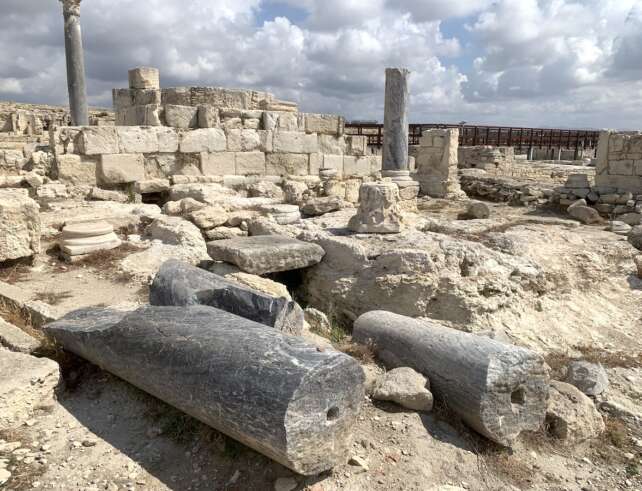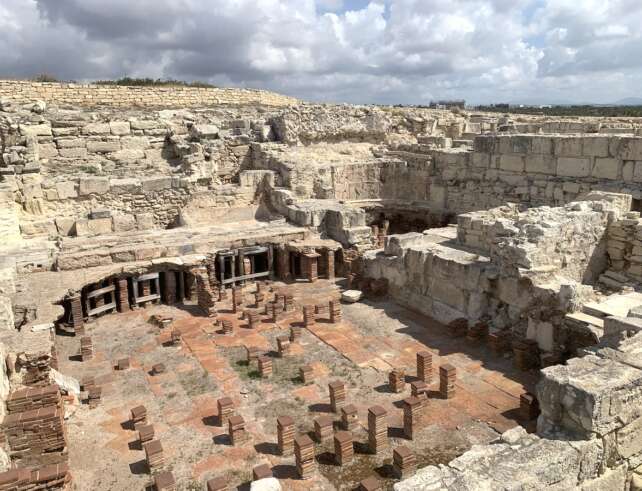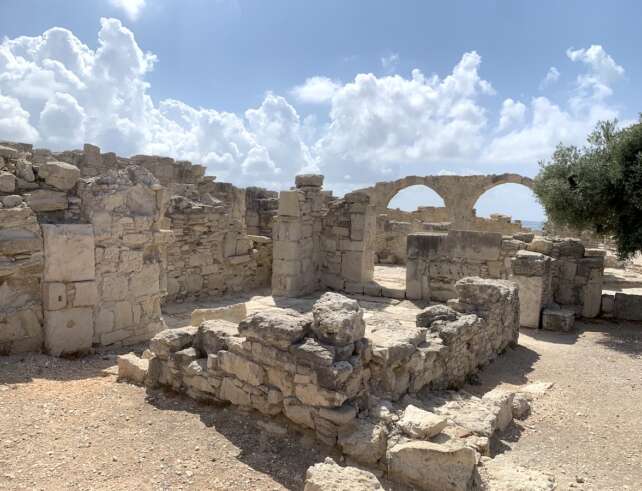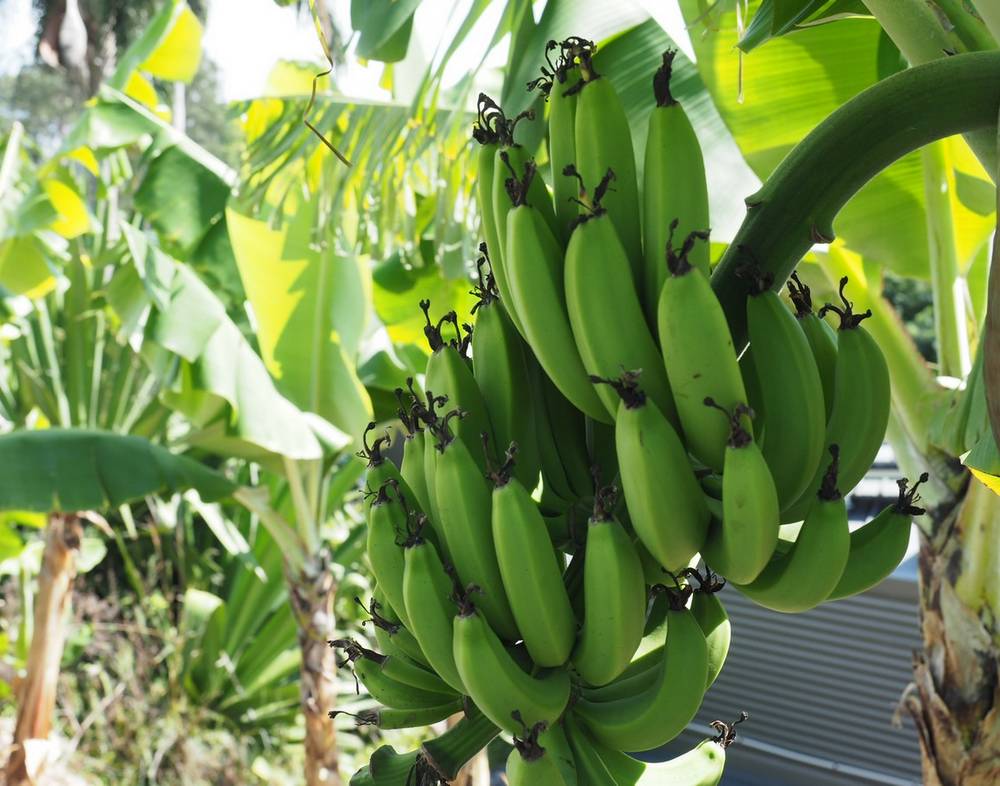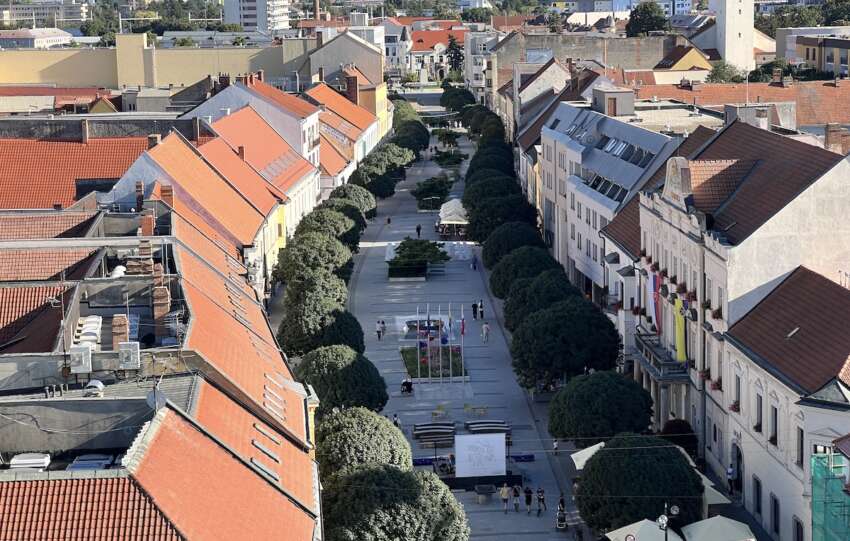Share This Article
On the southwestern coast of Cyprus, near the city of Limassol, lie the ruins of the ancient city of Kourion (also known as Curium). This is one of the most important archaeological sites on the island, offering a fascinating journey through millennia – with breathtaking views to match!
Location and How to Get There
Kourion is located about 19 km west of Limassol, near the village of Episkopi, within the British Overseas Territory of Akrotiri. There are several ways to get there:
By public transport from Limassol, you can take bus no. 16 (direction: Kourion Beach). A ticket costs €2, and the buses depart from the EMEL Bus Station Leontiou. You can find a map of the bus stops on the Limassol public transport website.
If you’re traveling by car from Limassol, take the A1 highway towards Paphos, exit at Episkopi, and follow the signs to Kourion. There is parking available on site.
Kourion – A Brief History
The history of Kourion dates back to the Late Bronze Age, around the 12th century BCE, when Greek settlers from the Argos region are believed to have arrived-likely following the collapse of the Mycenaean centers on the mainland. The city quickly developed into an important cultural and political hub on the southern coast of Cyprus. During the Classical period, Kourion was one of the island’s most powerful city-states, with influence extending over a large part of the surrounding region. It had its own necropolis, acropolis, and maintained strong cultural ties with mainland Greece.
In the Hellenistic and Roman periods, Kourion flourished as an administrative and commercial center. This era saw the construction of grand buildings such as a theater, public baths, mosaic-filled villas, and the impressive Sanctuary of Apollo Hylates, located slightly outside the main city. In the 4th century CE, Kourion was severely damaged by a series of earthquakes, including a devastating one in 365 CE that caused widespread destruction and loss of life. Although efforts were made to rebuild, the city never regained its former prominence and was eventually abandoned during the Byzantine era.
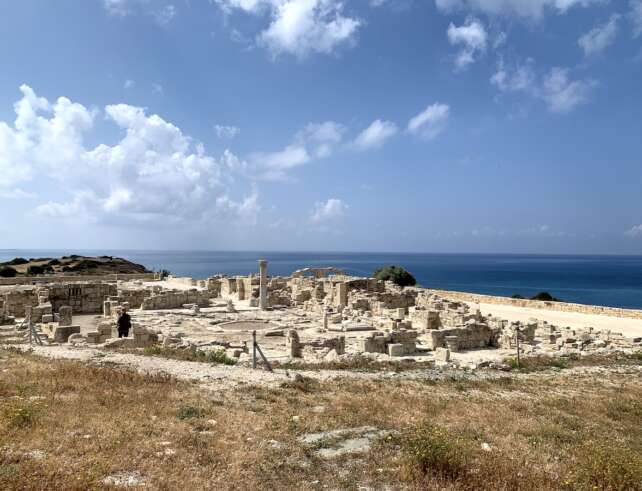
Tickets and Opening Hours
The Kourion archaeological site is open daily, with hours varying by season. It is closed on Christmas Day, New Year’s Day, and Orthodox Easter.
- April 16 to September 15: 08:30 - 19:30
- September 16 to April 15: 08:30 - 17:00
A standard entry ticket costs €4.50. There are also 1-day, 3-day, and 7-day passes available that grant access to multiple archaeological sites across Cyprus. Organized groups (more than 10 people) are eligible for a 20% discount.
What Can You See There?
The Ancient Theatre
The amphitheatre in Kourion is one of the most important and best-preserved archaeological landmarks in Cyprus. Built in the 2nd century CE, it originally seated around 3,500 spectators and was mainly used for theatrical performances and gladiator contests. Its impressive location – perched on a cliff overlooking the Mediterranean Sea—makes it one of the most scenic ancient theatres in the region.
The theatre has been partially restored and once again serves a cultural role. During the summer, it hosts concerts, plays, and festivals, all set against a backdrop of ancient ruins and supported by excellent acoustics. The stone seating, semicircular stage, and sea views combine to create an unforgettable atmosphere that transports visitors back to the heyday of the Roman Empire. Visiting the theatre is an absolute must when exploring Kourion.
Inside the amphitheatre, you can experience its remarkable acoustics for yourself. Stand at the center of the stage and say something aloud – the sound will travel around the arena and return to your ears. It’s a fascinating sensation that reveals the ingenious design of this ancient structure.
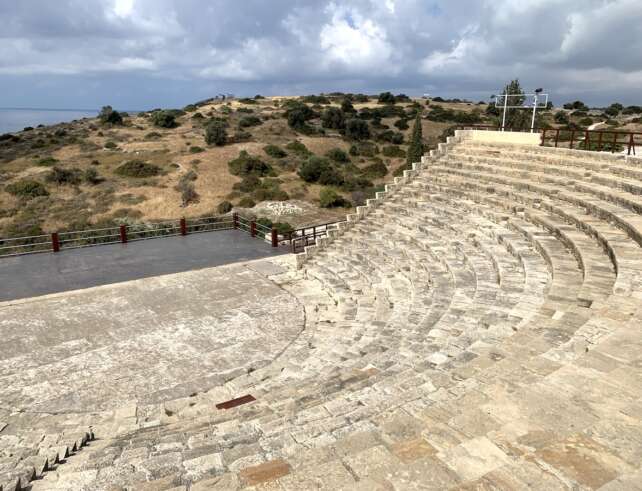
The House of Eustolios
The House of Eustolios is one of the most impressive archaeological sites in ancient Kourion. Built on the ruins of an earlier Roman villa, it was reconstructed during the 4th–5th centuries CE, in the early Christian period. The complex served both as a private residence and a bathhouse, as evidenced by the well-preserved mosaics and remnants of a hypocaust heating system.
The highlight of the house is its colorful floor mosaics, decorated with geometric and symbolic patterns. One of them features a Greek inscription, in which Eustolios – presumably the owner of the house – welcomes visitors and wishes them health and happiness. It’s a remarkable example of early Christian epigraphy in Cyprus.
The House of Eustolios offers insight into how daily life and architecture evolved during the later Roman era. It is located right next to the theatre, making it easy for visitors to explore both sites in one visit.
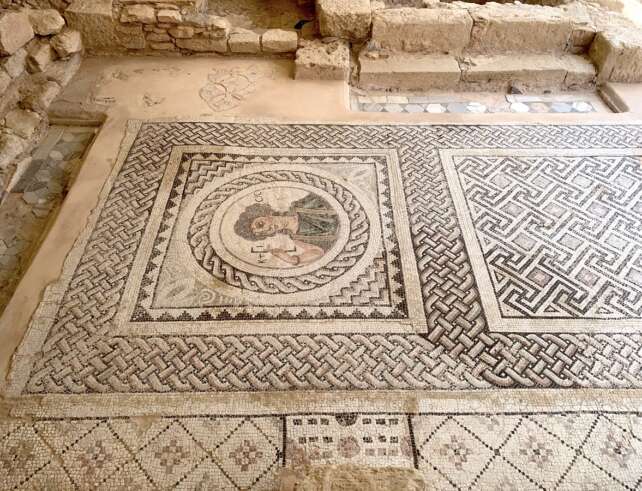
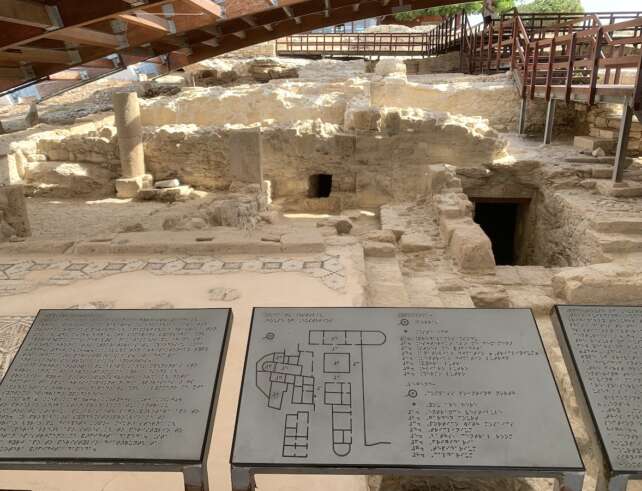

The House of the Gladiators and the House of Achilles
In Kourion, two exceptional ancient residences stand out – the House of the Gladiators and the House of Achilles. Both are renowned for their extraordinary floor mosaics, which have survived through the centuries and are considered some of the best-preserved examples of Roman art in Cyprus.
The House of the Gladiators gets its name from mosaic scenes depicting combat – in one room, two armed fighters are shown with their names inscribed in the Greek alphabet. The layout and decoration of the house suggest it may have belonged to a wealthy citizen, possibly a sponsor of gladiatorial games.
The House of Achilles, on the other hand, features scenes from Greek mythology – the most famous mosaic shows the moment Achilles is revealed among the daughters of King Lycomedes. The high quality of the decor indicates that this residence may have belonged to a Roman official.
Both houses offer valuable insight into daily life in ancient Kourion and are must-see highlights when visiting the archaeological site.
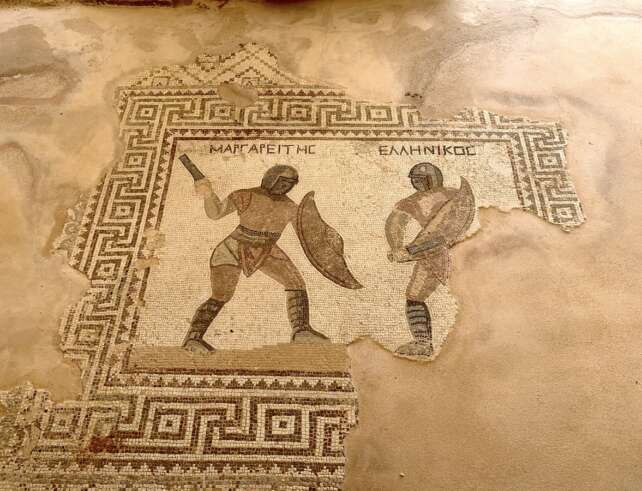
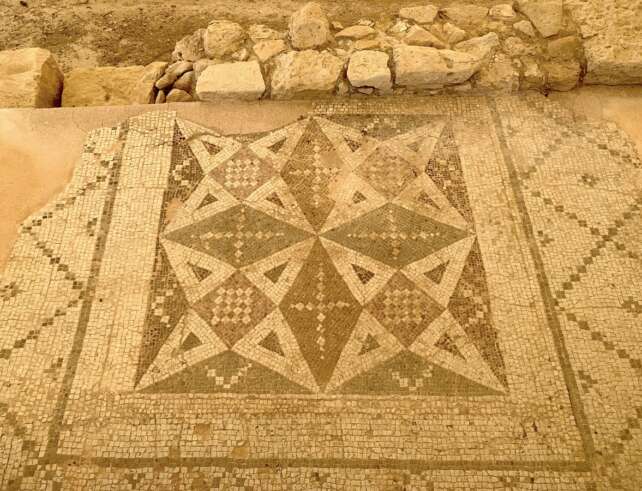
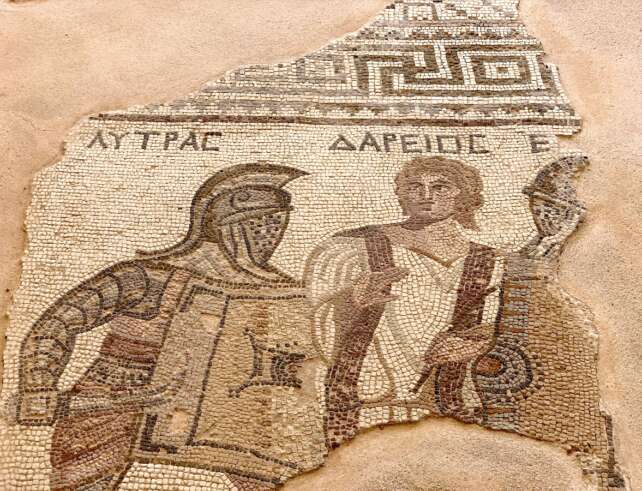
The Stadium
About 1 km west of the main archaeological site lies a 2nd-century AD stadium, which could accommodate around 6,000 spectators. It served as a venue for athletic competitions and public events.
Sanctuary of Apollo Hylates
Not far from Kourion, you’ll find the Sanctuary of Apollo Hylates, an important place of worship from the 8th century BC to the 4th century AD. The ruins of the temple, baths, and other sacred buildings are open to visitors and offer a glimpse into ancient Cypriot religious life.
Scenic Views
One of Kourion’s greatest highlights is its spectacular location on a cliff overlooking the Mediterranean Sea. Many spots around the site offer breathtaking views of the surrounding beaches and crystal-blue waters. The viewpoint near the ancient theatre is especially recommended for a stunning coastal panorama.

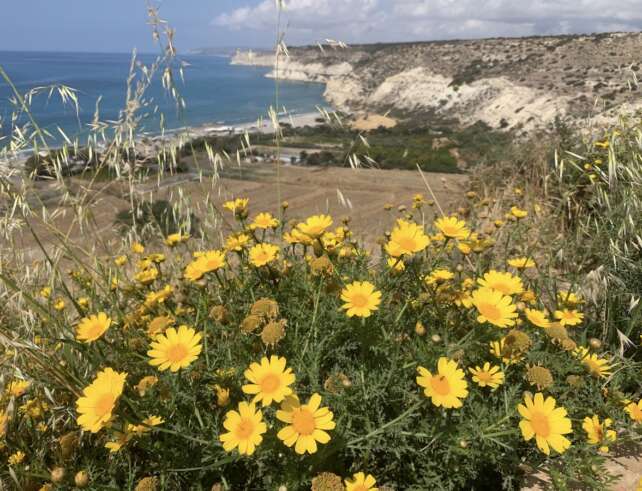
Is it worth visiting Kourion?
Absolutely yes. Kourion is a place that combines rich history, impressive ancient ruins, and breathtaking views. For lovers of history, archaeology, and stunning landscapes, a visit to Kourion will be an unforgettable experience. Additionally, the nearby Kourion Beach allows you to combine sightseeing with relaxation by the sea.
